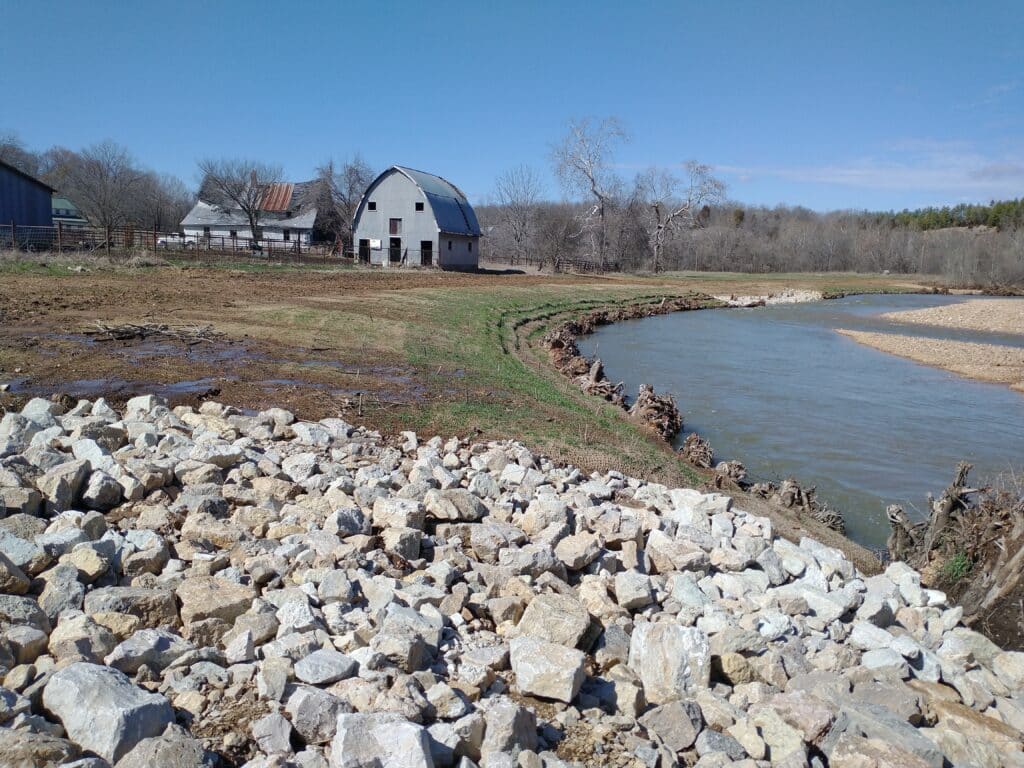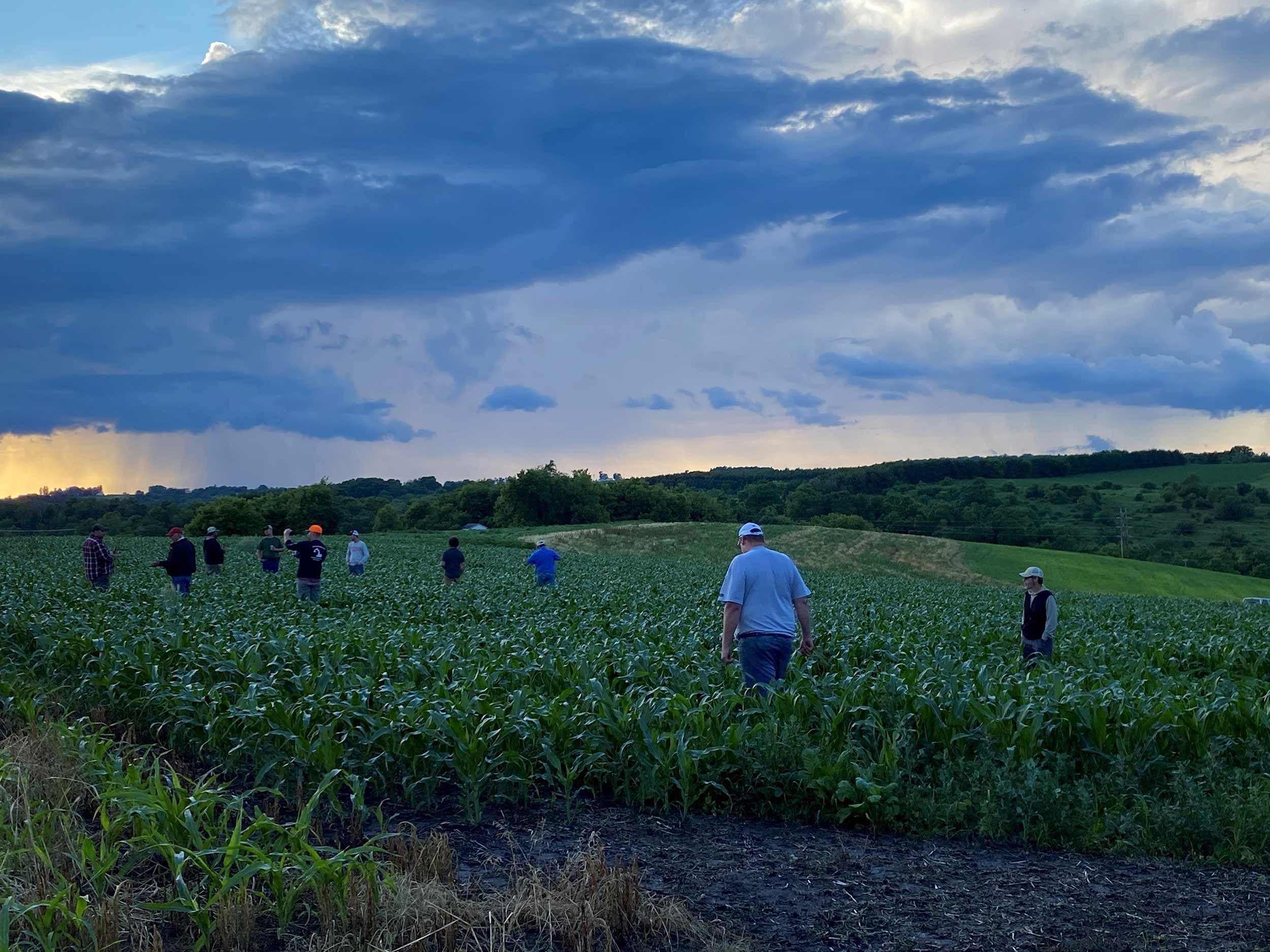Funded Project
2023| Huzzah/Shoal Creeks Woodlands for Wildlife

Contact
Applicant Organization: Ozark Land Trust
Contact: Abigail Lambert
Email: abigail.lambert@ozarklandtrust.org
Project
Abigail Lambert and Rob Pulliam have been working in the Meramec Watershed for over 20 years, establishing hard-earned trust with local farmers and landowners. One of these landowners, Jim Cottrell, was concerned about 1000 feet of highly erodible stream bank winding through his grazing lands. Jim had worked with Rob on a previous project, planting trees along a riparian corridor and creating alternative water sources on his cattle farm. So, when Jim noticed the streambank being trampled down and his soil drifting down the stream, he knew who to call.
They implemented a dynamic hybrid approach to stabilize the stream bank, combining rock with biotechnical elements like root balls and logs buried in the bank. Soil lifts made of wrapped coconut fabric were used to secure the soil, interspersed with vegetative plantings. The reshaped bank is now protected from erosion, with plans to plant trees along the stream bank and riparian corridor. These trees will anchor the soil with deep roots, provide shade to keep the water cool, drop leaf litter to nourish wildlife, and enhance the natural beauty of the stream for generations to come.
And the Huzzah will be the Cottrell’s home for generations. Lance Cottrell, Jim’s son-in-law, lives just downstream. Lance had collaborated with the Missouri Department of Conservation to fence the creek and plant trees along the riparian corridor on his cattle property. With Lance’s connections as a contractor, he often helped further conservation work by making introductions and sharing his successes with neighbors.
Not far from Lance’s place, Colin Cottrell, Jim Cottrell’s nephew, is also working with Fishers & Farmers, Ozark Land Trust, and other partners installing a new span bridge and aquatic organism passage barrier. To protect the streambank and the bridge approach, a rock wall was constructed to stabilize the bank. With a stable bridge approach in place, the time is right for planting two acres of trees and shrubs to further secure the soil.
Abigail works with Ozark Land Trust and Jim works with Missouri Department of Conservation, but they both agree that the key to conservation in the Huzzah Creek Watershed has been focusing on how conservation efforts benefit farmers. Abigail notes, “You really have to understand where the landowner is coming from, what their issues are, what their needs are, in order to have conservation that meets the needs of the landowner.” Rob agrees. His approach is to ask, “What are the barriers? What would keep somebody from doing something? We’re trying to get a better behavior change- a better conservation practice on the ground. The benefits always have to outweigh the perceived barriers.”
By putting landowners at the forefront of the initiative for Wildlife, Missouri Department of Conservation and Ozark Land Trust built trust while ensuring that conservation efforts are aligned with the needs and interests of those directly affected by them. It's not just about promoting the benefits of conservation but also about finding common ground and shared interests among stakeholders.
Conservation efforts have expanded neighbor-to-neighbor and through the local landowner committee. Rob also highlights that employing local contractors has facilitated many introductions and productive conversations, as these contractors are familiar with the landowners and understand the specific challenges of their properties.
Long standing relationships are driving the work in the Meramec watershed, shoulder-to-shoulder, through families and friends. Farmers and producers are improving their land while improving water quality and saving soil.

